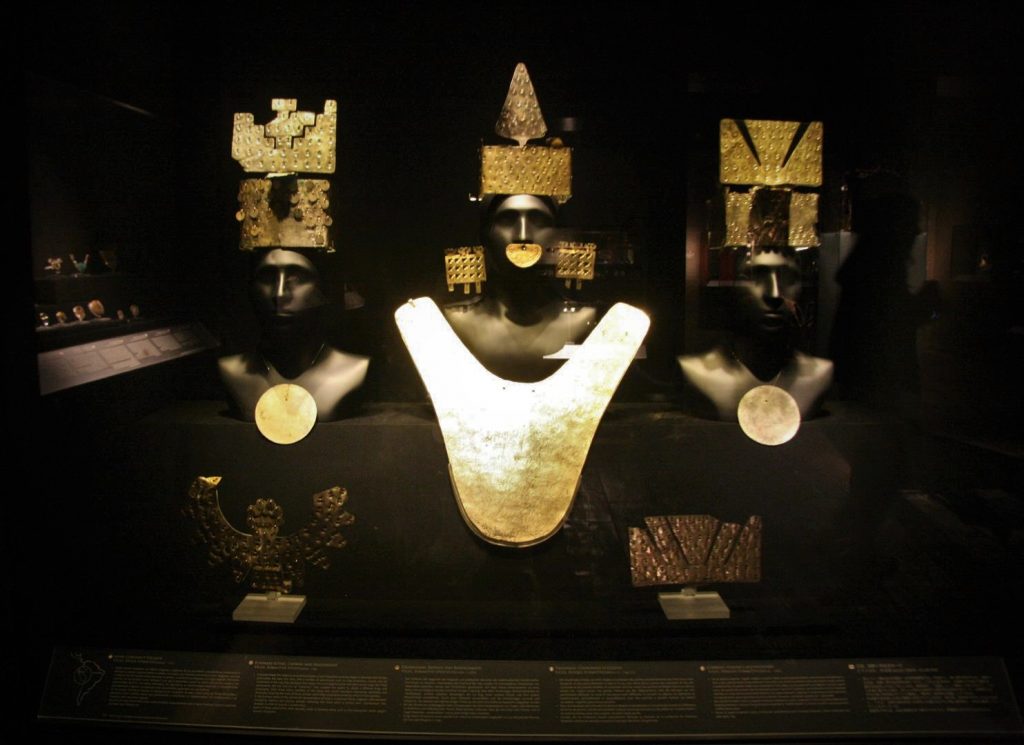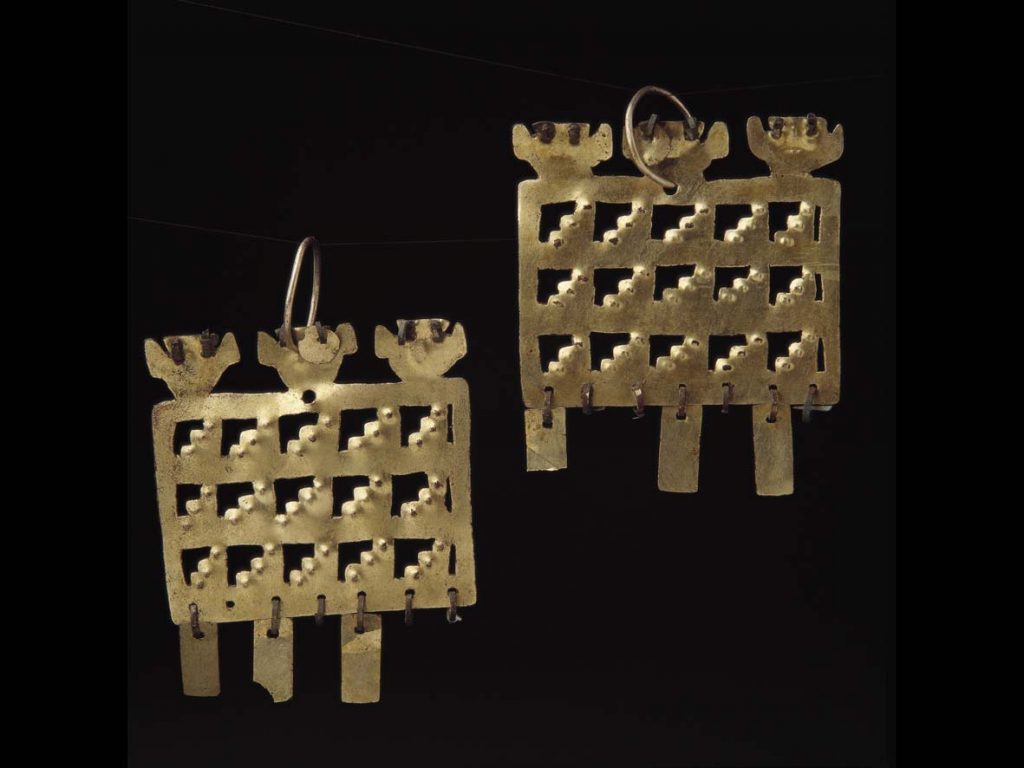Vicús Funerary Attire, Crowns and Headdresses
Room 11, Vitrine 139
Metal
Peruvian Northern Coast
Formative Epoch (1250 BC – 1 AD)
ML100841-ML100845, ML101555-ML101559, ML101561.
In ancient times, the religious and political leaders of pre-Columbian societies began to decorate their bodies, particularly the head and neck, with a number of adornments, such as nose ornaments, crowns and ear ornaments. In this way they displayed their status, their privileged position and their sacred origin. But these adornments did not function as “costumes”; they enabled the wearer to adopt a different body and personality. With these items, members of the ruling elite would transform themselves spiritually and physically, adopting the traits of those animals which they considered sacred by virtue of their powers.
In the funerary attire of this period the representation of birds is a constant theme, together with elements formed by feathers and plumes, perhaps indicating that these rulers or priests were “transformed” into birdmen in order to acquire a sacred status.
Some of these adornments were specially made as funerary attire, such as this breastplate, which weighs almost 2 kilograms.

